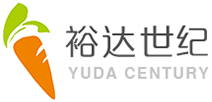chitosan preventing Salmonella of poultry
Release:2023.08.30The Application and Role of Chitosan in Chicken Production
Chitosan can improve muscle quality, increase egg production rate, improve egg quality, improve the intestinal microenvironment of chickens, inhibit Escherichia coli and Salmonella, and the effect of antibiotics is not significantly different.
Salmonella test in chickens
2.1 Trials conditions
240, 1-day old AA broiler chickens were randomly divided into 4 groups, with 6 replicates in each group and 10 chickens in each replicate. The first and second groups were fed a basic diet, the third group was supplemented with 50mg/kg of chlortetracycline, and the fourth group was supplemented with 30mg/kg of chitosan oligosaccharide in the basic diet; Among them, the second, third, and fourth groups were fed with 2ml of early Salmonella pullorum suspension (2X10 Å cfu/ml) at the age of 3 days, while the first group was fed with an equal amount of physiological saline. The experimental period was 21 days. The feeding experiment was sponsored by Yudacentury and conducted in the animal room of the School of Animal Science and Technology, Nanjing Agricultural University.
2.2 Results and Analysis
Table 1. The effect of chitosan oligosaccharide to Salmonella infection on the production performance of broiler chickens aged 1 to 21 days old
Team | Average daily gain /g | average daily feed intake /g | feed conversion ratio |
Team 1 control group |
|
|
|
Team2 Infection control group |
|
|
|
Team3 Antibiotic group |
|
|
|
Team 4 chitosan oligo group |
|
|
|
From Table 1 below, it can be seen that compared with the control group, the average daily gain of broilers in the infected control group decreased by 13.11% (P<0.01), and there was a trend of decreasing average daily feed intake (P>0.05). The feed to weight ratio showed an increasing trend. The average daily gain of broilers in the chitosan oligosaccharide group (4 groups) increased by 13.52% compared to the infected control group, and decreased by 7.34% compared to the antibiotic group
Table 2. The effect of chitosan oligosaccharide on the number of Salmonella in the cecum of broiler chickens infected with Salmonella
Team | 4-days old | 7-days old | 14-days old | 21-days old |
Team 1 control group |
|
|
|
|
Team2 Infection control group | 10±0.13 |
|
|
|
Team3 Antibiotic group |
|
|
|
|
Team 4 chitosan oligo group |
|
|
|
|
3 From Table 2, it can be seen that the number of Salmonella in the cecum of infected broiler chickens in the control group was significantly higher at 4 and 7 days of age than the control group, and also increased and reached a significant level at 14 days of age, and also increased at 21 days of age. The number of Salmonella in the cecum of broiler chickens in the Chitosan oligosaccharide group decreased by 11.00%, 13.69%, 25.88%, and 26.29% compared to the infection control group at the age of 4, 7, 14, and 21 days, respectively, and the number of Salmonella in the cecum was significantly lower than that in the antibiotic group at the age of 21 days.
2.4 conclusion
The results of this experiment indicate that the antibacterial effect of chitosan-oligosaccharide on Salmonella pullorum is significant, and it increases with the concentration of chitosan-oligosaccharide. Adding chitosan oligosaccharides to feed increases the daily weight gain of broilers and reduces the number of Salmonella in the cecum, similar to the effect of adding antibiotics.



